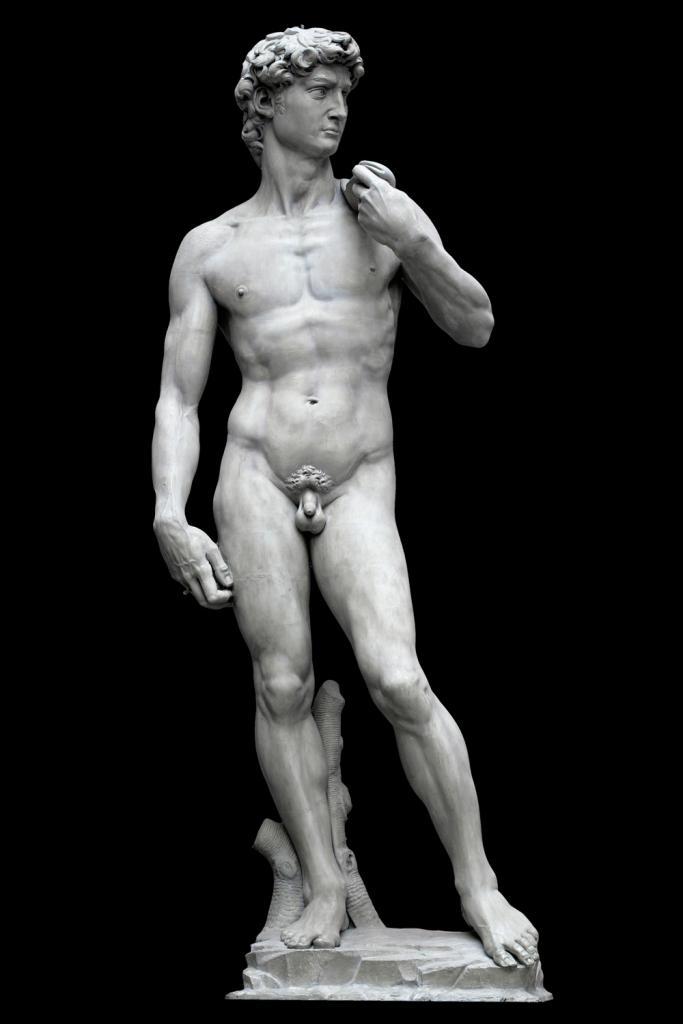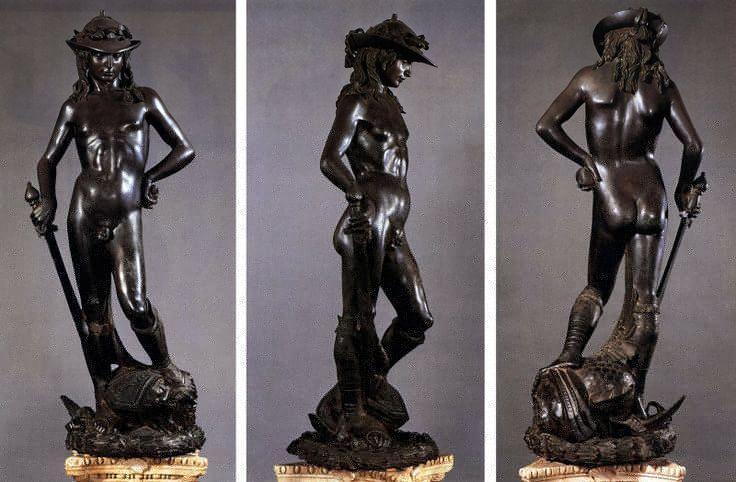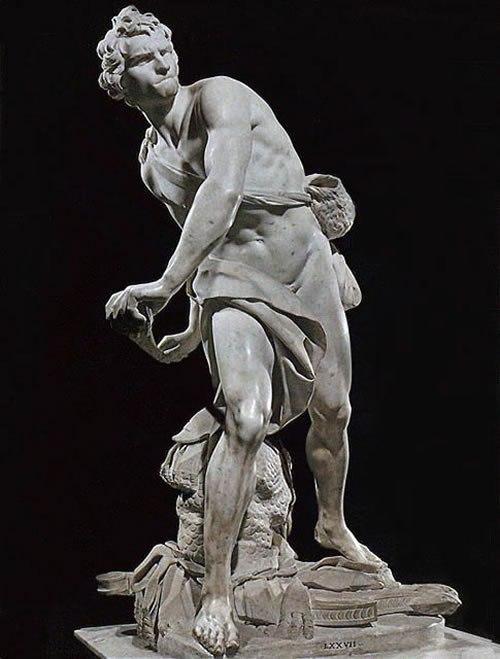The three Davids (Donatello, Michelangelo, Bernini)
The Renaissance was a period in European history following the Mediaeval period. Renaissance literally means rebirth; and indeed, it is generally considered a time of a revival of classical values. It is a time of artistic efflorescence with an abundance of artistic geniuses, such as Donatello, Michelangelo, and Bernini (who is credited as the creator of the Baroque style). They left us a copious quantity of artworks. These three masterpieces showcase the movement in art from the early Renaissance to Baroque. This short article attempts to discuss and compare three sculptures by them, all of which have the same subject of the Biblical and historical figure: David. Still, each of those three masterpieces possesses distinctive artistic qualities, furnishing them with unique pulchritude.
Donatello, Michelangelo, and Bernini, like many other erudite Renaissance and Baroque artists, aced in various artistic media. They were painters, sculptors, architects. They were also well-versed in other areas. For example, Michelangelo also wrote an impressive number of poems. David, as has been mentioned, was chosen by the three artists as a topic of one of the sculptures discussed here. He is the famous Biblical character who fights against the giant Philistine named Goliath and prevails by using a sling with a stone. His story is narrated in the book of Samuel, which is a part of the Old Testament of the Bible.
Donatello’s David makes use of various elements and principles of designs. The use of bronze gives the artwork a shiny texture, which amplifies the anatomical details when viewed under some amount of light. It also intensifies the brightness values, which gives us a better sense of the shape and the volume of the artwork. This use of great contrast in light and dark values is called chiaroscuro. Chiaroscuro is usually used in paintings and prints, but the same effect is seen in this statue of David by Donatello. Furthermore, this artwork also shows the beginning of Humanism with an interest in using contrapposto in sculpture.
Similarly, Michelangelo’s exquisite sculpture of David is also an example of artistic expression with many elements and principles successfully employed. Michelangelo’s David shows little hint of movement. However, the details of the veins and the muscles are a giveaway of his physical and emotional readiness for battle. This artwork attempts to depict a perfect human body with ideal aesthetic features. I personally consider that this iconic masterpiece by Michelangelo is the peak of Renaissance art.
Likewise, the work of Bernini displays masterful skills. His David also possesses a physique that is fit for combat, though not ideal. The muscular limbs and twisting body of David in this sculpture exhibit an anatomically balanced firmness. This artwork possesses a great dynamic quality with it suggesting a sequence of poses. David’s movement brings our attention to the space beyond the statue itself and makes us contemplate the action in the narrative.
These three sculptures share many similarities. First, they all are depictions of the same character. They are all freestanding nude statues (the ones by Donatello and Bernini have some minimal garments on), which reminds us of the heroic nude statues of classical antiquity. Besides, they all demonstrate successful application of the elements of art and principles of designs. Examples are countless. For instance, the texture of Michelangelo’s and Bernini’s works turns marble into a realistic representation of human flesh. The asymmetrically balanced pose of contrapposto gives Michelangelo’s and Donatello’s works a sense of real human bodily expressions. The movement of David in all three works gives us a sense of a real action taking place within the same space and time of the audience.
Perhaps one of the most visually obvious differences between the three sculptures is their medium. Donatello’s David is a bronze statue, whereas the other two are marble works. Besides, each of the artwork depicts David at a different time of the narrative. The two Renaissance sculptures depict a more stable state of David's action, while the Baroque sculpture by Bernini brings David to a dramatic moment. Donatello emphasizes the victory of the humble David by depicting his youthful body (without pubic hair!) trampling the head of the vanquished Goliath. Michelangelo, on the other hand, focuses on the potential energy in reserve by portraying David before his fight against the fearsome adversary. Dissimilarly, Bernini depicts David in action, detailing the moment of maximum kinetic energy.
Each of the three artists successfully produced a timeless masterpiece out of a humble character. The three sculptures of David share many similarities, but also differ significantly in many ways. These artworks also show the audience the change in art style from the Renaissance to the Baroque period. Yet, they all are examples of effective utilization of the elements and principles of art. Indeed, these are iconic masterpieces in art history that are all praiseworthy.
Images



Work Cited
Kleiner, Fred S., and Helen Gardner. Gardner’s Art through the Ages: A Global History. Cengage Learning, 2020.
michelangelo
,bernini
,donatello
,david
,art
,nghệ thuật
,ngoại ngữ
Cám ơn bài viết hay của bạn 👍

Người dùng Noron
Cám ơn bài viết hay của bạn 👍
Nguyễn Duy Thiên
The three Davids (Donatello, Michelangelo, Bernini) – Vincentius Nguiēn Giaciemēnsis 阮唯天
vincentiusthien.wordpress.com